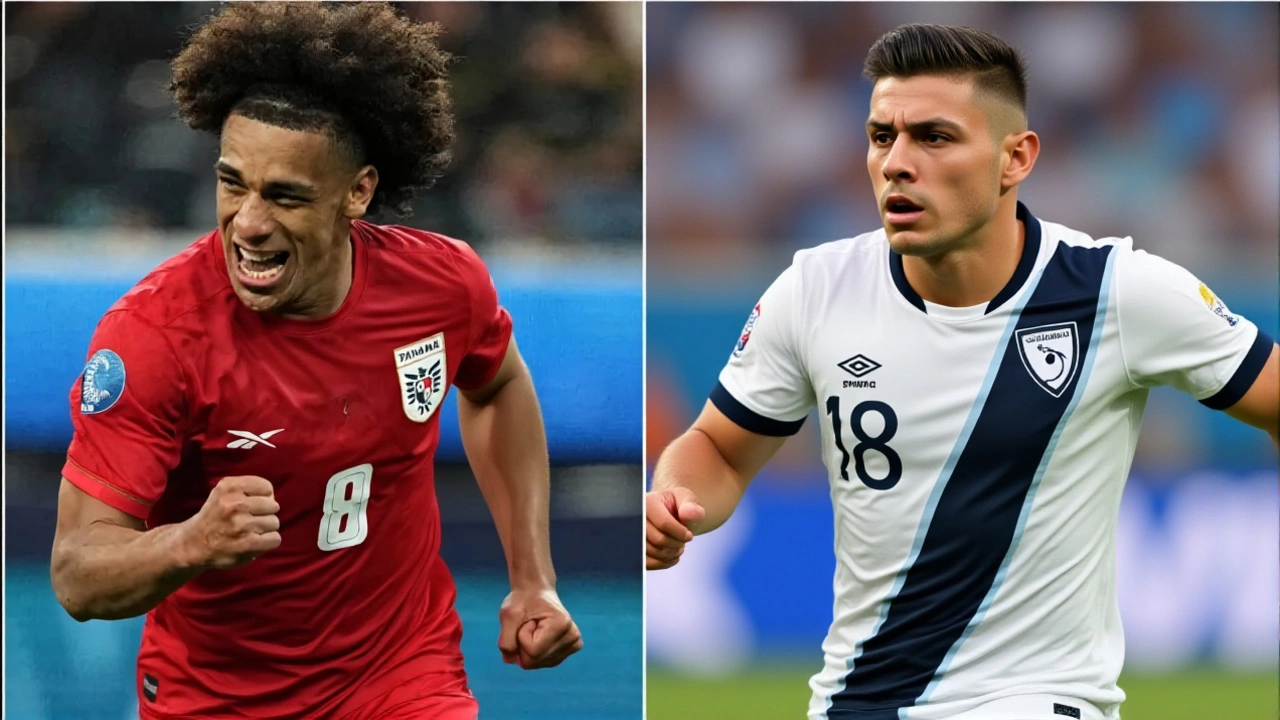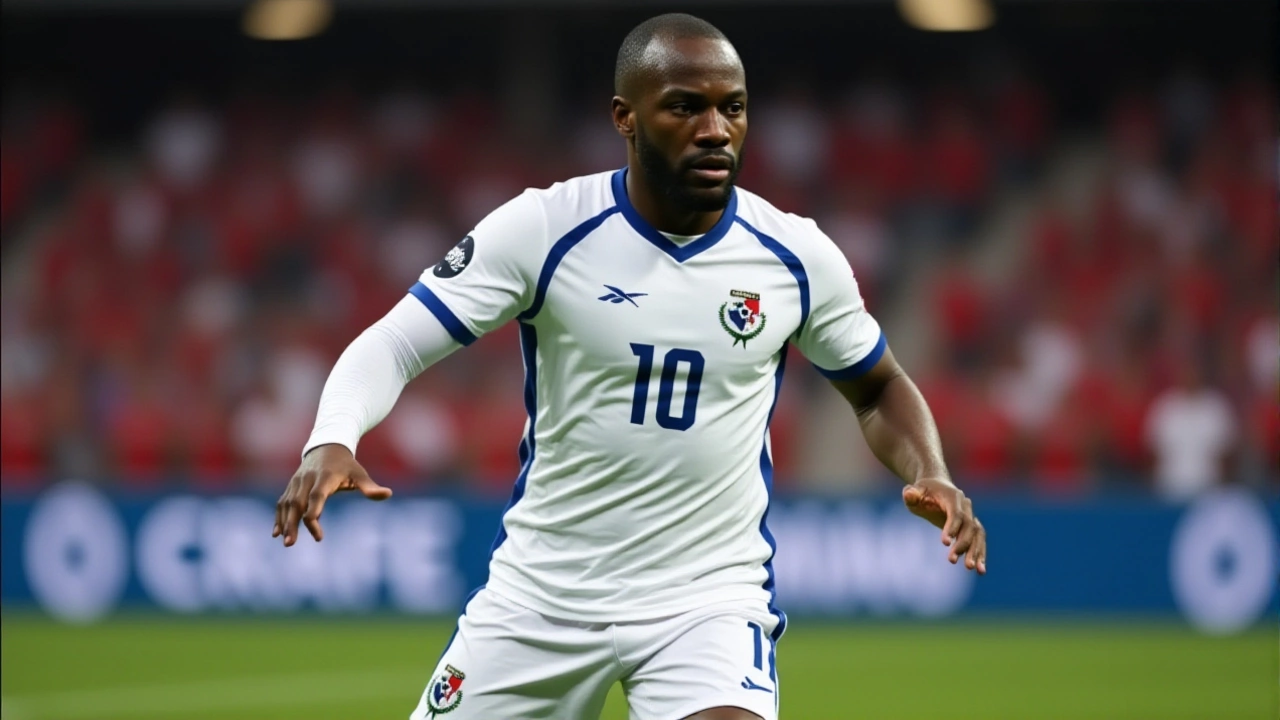Panama and Guatemala Draw 1-1 in Crucial World Cup Qualifier, Setting Stage for Dramatic Elimination

When the CONCACAF Third Round Qualifiers for the 2026 FIFA World Cup kicked off in Panama City on September 8, 2025, few expected the drama that would unfold at Estadio Rommel Fernandez. A 1-1 draw between Panama and Guatemala wasn’t just a point split—it was a turning point. Óscar Santis put Guatemala ahead in the 35th minute, but C. Harvey responded just two minutes later, turning the stadium’s roar from anxious to electric. The final whistle, blown by Mexican referee Adonai González, left 28,186 fans stunned—not by the score, but by what it meant for the race to the 2026 FIFA World Cup.
A Match That Defined a Campaign
It was the 44th meeting between these Central American rivals, and history was heavy on the line. Panama, known as Los Canaleros, came in riding a nine-match unbeaten streak under manager Thomas Christiansen. Guatemala, Los Chapines, had just pulled off their first-ever away win in World Cup qualifying against El Salvador—yet still arrived with doubt clinging to them like humidity. The game itself was a tense, tight affair. Guatemala dominated possession, controlled midfield tempo, and created more clear chances. But as CBS Sports Golazo America noted weeks later, “It’s what you do with the chances that matters.” Panama’s two shots on target? Both found the net. Guatemala’s dozen? None did.
The Substitutes Who Didn’t Play, But Still Mattered
While the starting XI for Panama wasn’t fully documented, the bench told its own story. César Blackman, Luis Mejía, José Córdoba, César Yanis, César Samudio, and Edward Cedeño all sat ready—six players who could shift the game’s momentum. In the second half, six substitutions were made between the 62nd and 85th minutes, a clear sign of tactical scrambling. Neither manager could find the winning formula, but Panama’s ability to absorb pressure and strike with surgical precision was the difference. The fact that they didn’t need to change their approach—just their timing—says everything about their growing composure.
Where the Group Stood After Matchday 2
After this draw, Panama sat tied atop Group A with Suriname—both with 9 points from two wins and three draws. But Suriname had a +5 goal difference. Panama? +2. Guatemala, with 5 points and a -1 goal difference, was already five points behind the automatic qualification spots. El Salvador, winless in four, was a distant fifth. The math was brutal: Guatemala needed to win their remaining three games and hope for a miracle. And they knew it.

The November Reckoning
Fast-forward to November 13, 2025. The rematch in Guatemala City at Estadio Manuel Felipe Carrera wasn’t just another qualifier—it was a funeral for Guatemala’s World Cup dreams. Cecilio Waterman scored twice, José Fajardo added the third. Guatemala’s Arquímides Ordóñez and Rudy Muñoz pulled back two, but it was too little, too late. The final whistle confirmed it: Guatemala was eliminated. The 3-2 loss didn’t just end their campaign—it exposed a team that could create but couldn’t close, a squad full of heart but lacking the ruthless efficiency of their rivals.
What’s Left for the Contenders
With Guatemala out, the battle shifted to Panama, Suriname, and El Salvador. Panama, still in second, faced El Salvador on November 18 with a direct berth within reach. A win would seal it. A draw? They’d have to hope Suriname slipped up. Suriname, meanwhile, had already beaten Panama and Guatemala, and held the tiebreaker advantage. The final matchday came down to goal difference, pressure, and nerves. Panama didn’t blink. They won 2-0, securing their spot in the 2026 FIFA World Cup—not just as a participant, but as one of CONCACAF’s three direct entrants.

Why This Matters Beyond the Pitch
This qualifying cycle wasn’t just about who made it to the World Cup. It was about legacy. For Panama, it meant continuing a tradition of regional relevance. For Guatemala, it meant another cycle of near-misses and heartbreak. And for fans? It was a reminder that in World Cup qualifying, the difference between glory and grief can be measured in seconds—like Harvey’s 37th-minute strike, or the final save by Guatemalan keeper Nicholas Hagen in the 95th minute of the November clash. One moment, you’re dreaming. The next, you’re counting the cost.
Frequently Asked Questions
How did Panama qualify for the 2026 World Cup after the 1-1 draw with Guatemala?
After the 1-1 draw on September 8, Panama remained in second place in Group A with 9 points. They secured direct qualification by defeating El Salvador 2-0 on November 18, 2025, finishing with 12 points and a +5 goal difference—enough to leapfrog Suriname on goal difference and clinch one of CONCACAF’s three automatic World Cup berths.
Why was Guatemala eliminated despite dominating possession against Panama?
Guatemala controlled the ball and created more chances in both matches against Panama, but converted only one of 14 shots on target across the two games. Panama, by contrast, scored on both of their shots on target in the September draw and added three more in the November rematch. In World Cup qualifying, efficiency trumps dominance—and Guatemala’s inability to finish cost them dearly.
Who officiated the Panama vs. Guatemala matches, and was there controversy?
Mexican referee Adonai González handled the September 8 match in Panama City. The November 13 rematch in Guatemala City was overseen by Guatemalan referee Nicholas Hagen, who also played as a goalkeeper for the national team. His presence sparked minor debate, but no official protests were filed. His late save against Andrés Andrade in the 95th minute was widely praised as fair and decisive.
What impact did the 1-1 draw have on Panama’s coaching staff?
The draw reinforced manager Thomas Christiansen’s belief in defensive discipline and counterattacking efficiency. His team had gone nine matches unbeaten before the game, and the result proved their ability to grind out results under pressure. Christiansen later called the performance "a testament to mental toughness," and it helped him finalize his World Cup squad selection with confidence.
How many teams from CONCACAF qualify for the 2026 World Cup?
CONCACAF has three direct qualification spots for the 2026 FIFA World Cup, hosted by the United States, Canada, and Mexico. A fourth team enters an intercontinental playoff against a side from another confederation. Panama secured one of the three direct berths; the other two went to the United States and Mexico, while Canada finished fourth and entered the playoff.
What’s next for Guatemala’s national team after elimination?
Guatemala’s federation announced a full restructuring of its youth development pipeline and coaching staff after the 2026 campaign. With their last World Cup appearance dating back to 1988, the country is now focusing on building a new generation of players through academies in Quetzaltenango and Guatemala City, aiming to compete in the 2030 cycle. The loss to Panama, especially the 3-2 defeat, became a rallying cry for reform.

